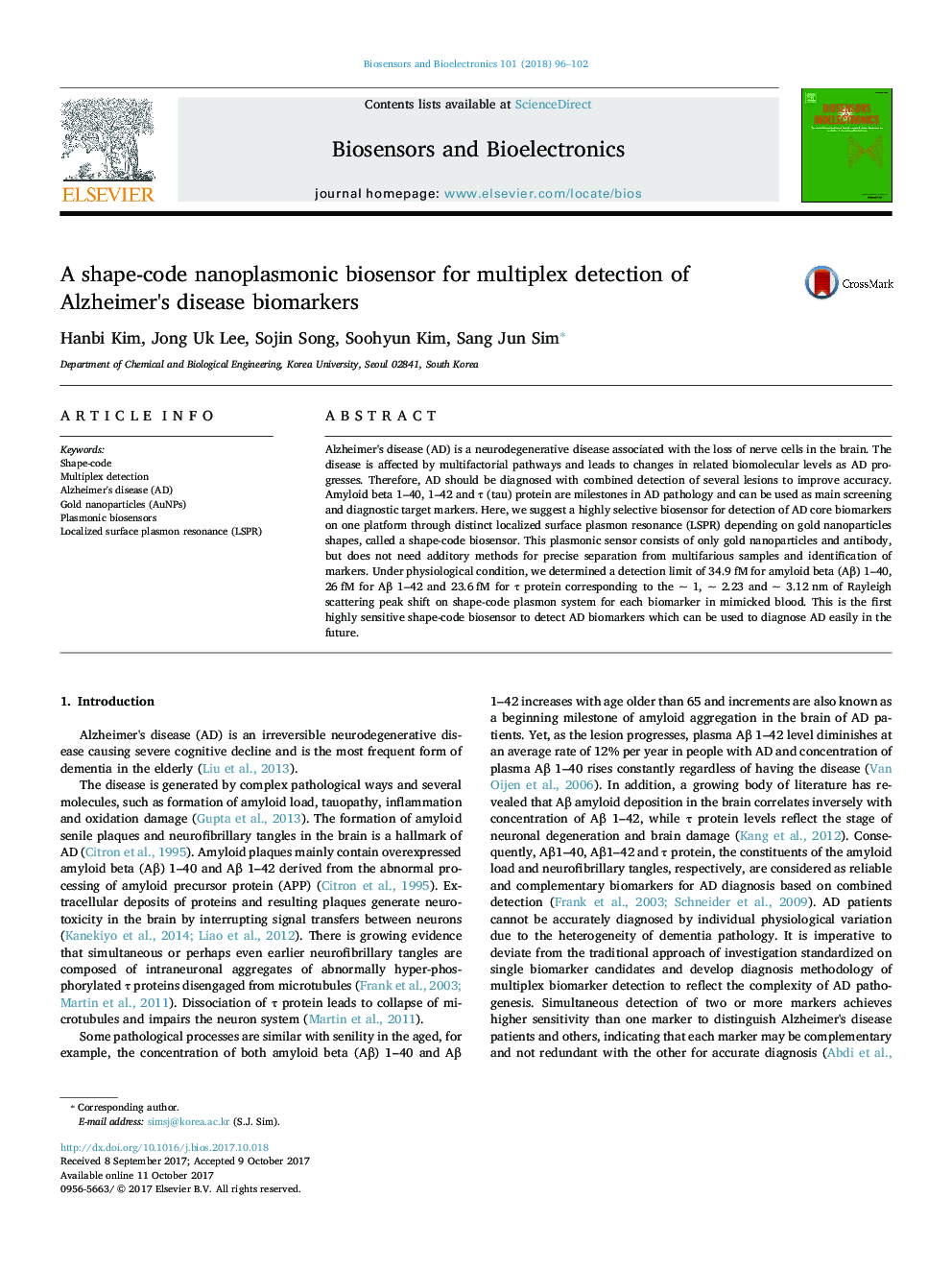| Article ID | Journal | Published Year | Pages | File Type |
|---|---|---|---|---|
| 5030746 | Biosensors and Bioelectronics | 2018 | 7 Pages |
Abstract
Alzheimer's disease (AD) is a neurodegenerative disease associated with the loss of nerve cells in the brain. The disease is affected by multifactorial pathways and leads to changes in related biomolecular levels as AD progresses. Therefore, AD should be diagnosed with combined detection of several lesions to improve accuracy. Amyloid beta 1-40, 1-42 and Ï (tau) protein are milestones in AD pathology and can be used as main screening and diagnostic target markers. Here, we suggest a highly selective biosensor for detection of AD core biomarkers on one platform through distinct localized surface plasmon resonance (LSPR) depending on gold nanoparticles shapes, called a shape-code biosensor. This plasmonic sensor consists of only gold nanoparticles and antibody, but does not need additory methods for precise separation from multifarious samples and identification of markers. Under physiological condition, we determined a detection limit of 34.9 fM for amyloid beta (Aβ) 1-40, 26 fM for Aβ 1-42 and 23.6 fM for Ï protein corresponding to the ~ 1, ~ 2.23 and ~ 3.12 nm of Rayleigh scattering peak shift on shape-code plasmon system for each biomarker in mimicked blood. This is the first highly sensitive shape-code biosensor to detect AD biomarkers which can be used to diagnose AD easily in the future.
Keywords
Related Topics
Physical Sciences and Engineering
Chemistry
Analytical Chemistry
Authors
Hanbi Kim, Jong Uk Lee, Sojin Song, Soohyun Kim, Sang Jun Sim,
